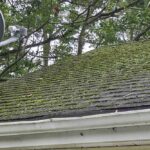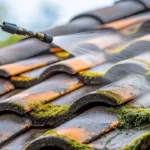In today’s world, the importance of adopting energy-efficient roof retrofits cannot be overstated. As homeowners, we are constantly seeking ways to reduce our carbon footprint and lower energy bills. Implementing energy-efficient roof retrofits can significantly contribute to these goals, providing both environmental benefits and cost savings.

Understanding Roof Retrofits
Roof retrofitting involves modifying an existing roof to improve its energy efficiency. This process is essential for homeowners looking to enhance the sustainability of their homes. By upgrading your roof, you not only improve energy efficiency but also increase the longevity and durability of your roofing system.
Benefits of Energy-Efficient Roof Retrofits
The advantages of energy-efficient roof retrofits are numerous:
- Reduced Energy Costs: An energy-efficient roof reduces the need for excessive heating and cooling, leading to lower utility bills.
- Environmental Impact: By decreasing energy consumption, you reduce your carbon footprint, contributing to a healthier planet.
- Increased Property Value: Homes with energy-efficient features are often more attractive to buyers, potentially increasing your property’s market value.
Types of Energy-Efficient Roof Retrofits
When considering roof retrofits, there are several options to explore:
Cool Roofs
Cool roofs are designed to reflect more sunlight and absorb less heat compared to standard roofs. They are a popular choice for energy-efficient roof retrofits as they help keep your home cooler, reducing the need for air conditioning. For more information on cool roofs, you can visit Wikipedia.
Green Roofs
Green roofs are covered with vegetation, providing insulation and reducing heat absorption. They are not only energy-efficient but also enhance the aesthetic appeal of your home. Learn more about the benefits of green roofs by visiting green roof lifespan.
Insulated Roof Panels
Insulated roof panels provide an additional layer of insulation, improving energy efficiency and reducing heat transfer. These panels are an effective way to enhance the thermal performance of your roof.
Steps to Implement Energy-Efficient Roof Retrofits
1. Conduct a Roof Assessment
Before starting any retrofit project, conduct a thorough assessment of your current roof. This evaluation will help identify areas that require improvement and determine the most suitable retrofit options.
2. Choose the Right Retrofit Options
Based on your assessment, select the retrofit options that best suit your needs and budget. Consider factors such as climate, roof type, and energy goals when making your decision.
3. Hire a Professional Contractor
Hiring a professional contractor is crucial for ensuring the quality and longevity of your retrofit project. Look for contractors with experience in energy-efficient roof retrofits and check their references and credentials.
4. Plan for Maintenance
Regular maintenance is essential for maximizing the benefits of your retrofit. Schedule periodic inspections and address any issues promptly to maintain the efficiency of your roof.
Common Challenges and Solutions
1. Initial Costs
One of the main challenges of energy-efficient roof retrofits is the initial cost. However, the long-term savings on energy bills often outweigh the upfront expenses. Consider financing options or government incentives to help offset the initial costs.
2. Finding the Right Contractor
Finding a reliable contractor can be challenging. Take the time to research and interview multiple contractors to find the best fit for your project. Seek recommendations from friends and family, and read online reviews to ensure you choose a reputable professional.
3. Navigating Building Codes
Compliance with local building codes is essential for any retrofit project. Work with your contractor to ensure all necessary permits are obtained and that your project adheres to regulations.
Frequently Asked Questions
1. What is the lifespan of an energy-efficient roof?
Energy-efficient roofs can last between 20 to 50 years, depending on the materials used and maintenance practices. Regular upkeep can extend the lifespan of your roof.
2. How much can I save on energy bills with a retrofit?
The savings depend on various factors, including the type of retrofit and your local climate. On average, homeowners can save between 10-30% on energy bills after implementing energy-efficient roof retrofits.
3. Can I retrofit my roof myself?
While some minor retrofits can be DIY projects, it’s recommended to hire a professional for more complex tasks to ensure quality and safety.

Conclusion
Embracing energy-efficient roof retrofits is a smart investment for any homeowner. By enhancing your roof’s energy performance, you contribute to a sustainable future while enjoying lower energy costs and increased property value. Start your retrofit journey today and join the movement towards eco-friendly living.
This article contains affiliate links. We may earn a commission at no extra cost to you.








